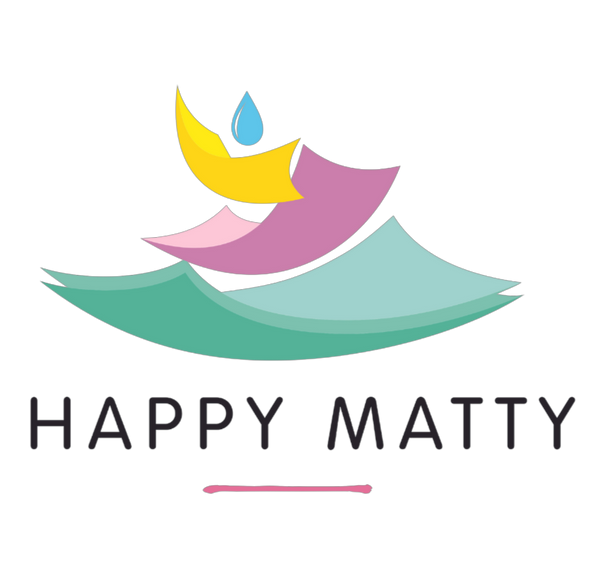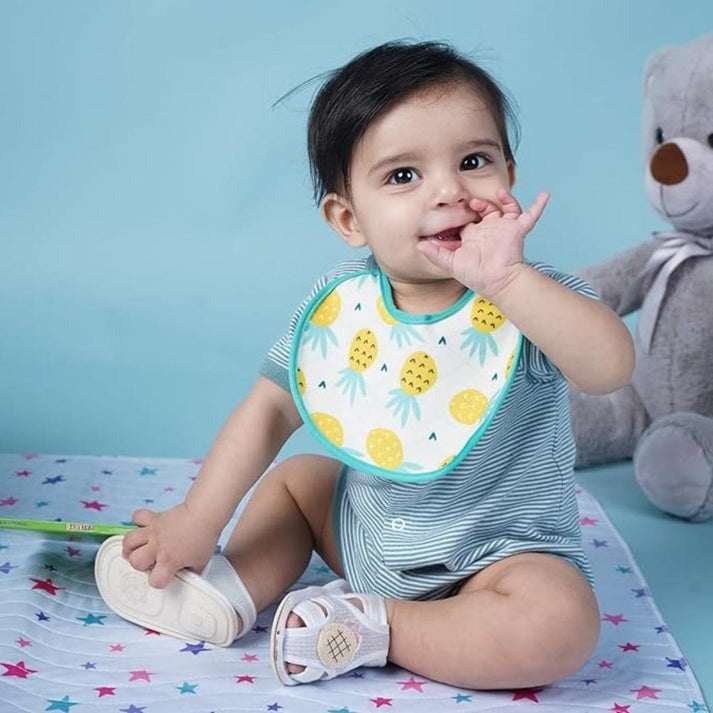There’s a certain magic in watching a toddler pick up a spoon for the first time, their tiny fingers gripping it with the determination of a mountain climber. That moment marks a new stage in their independence—a time when they start exploring the world of feeding themselves, one messy bite at a time. Parents often brace themselves for this chapter with equal parts excitement and dread, because as rewarding as it is to see a child learn to feed themselves, the mess that comes with it can feel like an avalanche of chaos. Enter the humble bib—an accessory that might seem minor, but in reality, it quietly supports one of the most important milestones of early childhood: independent feeding.
Why Bibs Are More Than Just Mess-Catchers
When you think of bibs, you might picture brightly colored cloths or wipeable silicone shields dangling around a toddler’s neck, protecting their clothes from an inevitable splash of spaghetti sauce or a yogurt disaster. But bibs aren’t simply about saving laundry time. They play an active role in creating a space where toddlers feel free to experiment with food, knowing there’s a safety net underneath them—literally.
Toddlers are natural explorers. They want to poke, smear, and fling food not because they’re being mischievous but because they’re learning texture, temperature, and cause-and-effect. Bibs allow for that exploration without fear. When a parent knows the bib will catch most of the mess, they’re less likely to interrupt or redirect every messy scoop, and the toddler, in turn, feels more freedom to try, fail, and try again. That’s the foundation of independent feeding: the ability to attempt, to spill, and to keep learning without the pressure of perfection.
The Psychological Boost of Letting Toddlers Lead
Feeding isn’t just a physical skill; it’s also a confidence-building exercise. Imagine for a moment being scolded every time you dropped something while learning to cook—it would sap your motivation pretty quickly. Toddlers feel the same. When they wear a bib, there’s an unspoken permission to be imperfect. Parents, relieved that a favorite outfit won’t be ruined, can offer encouragement instead of constant corrections.
This shift in energy transforms mealtime. Instead of becoming a battle to keep the table pristine, it evolves into a shared adventure. Bibs become more than a layer of protection; they’re almost like a cape—a subtle reminder that, “Hey, you’re allowed to try this on your own.” That kind of permission nurtures independence far more effectively than any stern reminder to “eat neatly.”
The Evolution of Bibs: From Cloth Squares to Clever Designs
Once upon a time, bibs were simple cloth rectangles tied around a baby’s neck. They did their job, but they had limitations—soaked-through fabric, constant washing, and flimsy coverage. Fast forward to today, and the world of bibs has evolved in incredible ways. Materials are softer yet sturdier, designs are smarter, and features like deep pockets for catching runaway peas or waterproof linings have turned bibs into real mealtime tools.
This evolution matters because the right bib can shift the entire feeding experience. A silicone bib with a scoop tray means toddlers can retrieve dropped bits themselves, adding another layer of independence. A bib that’s easy for a child to wear without fuss means fewer pre-meal battles. It’s these small innovations that turn an ordinary accessory into something that actively supports learning and confidence.
The Comfort Factor: Why It Matters for Toddlers
It’s easy to overlook comfort when thinking about bibs—you strap it on, the meal happens, you wipe it off. But for toddlers, comfort is everything. If a bib rubs their neck or feels too stiff, mealtime becomes uncomfortable, and the child associates that discomfort with eating itself. This can discourage them from sitting through a meal, let alone practicing feeding themselves.
That’s why thoughtfully designed bibs are essential. Lightweight materials that don’t weigh down a toddler’s neck, soft edges that won’t scratch delicate skin, and adjustable closures that grow with the child all contribute to an environment where feeding independently feels natural, not forced. When a bib fits well, it fades into the background, letting the focus stay on the plate—and on those small but significant attempts to eat solo.
Mess as a Teacher: The Freedom Bibs Provide
Here’s a truth every parent eventually learns: mealtime mess isn’t just inevitable—it’s valuable. Every smear of avocado on the tray, every drip of oatmeal on the bib, every splash of juice across the table is part of how toddlers understand the world. When a child drags their spoon through a pile of mashed potatoes, they’re not just making a mess; they’re learning how pressure changes shape, how textures feel, how hand movements affect their food.
Bibs play an unsung role in this messy education. They create a kind of safety net for both the child and the parent. The toddler feels secure enough to explore because there’s less fear of reprimand for ruining their shirt. The parent feels calmer because they know the cleanup won’t be an endless task. This subtle reassurance encourages both sides to relax—and when everyone at the table is more relaxed, toddlers thrive.
The Independence Ripple Effect
Independent feeding is about so much more than getting food from plate to mouth. It sparks a chain reaction of skills and confidence. A toddler who masters holding a spoon learns coordination that translates to other tasks, from stacking blocks to scribbling with crayons. A child who feels trusted to manage their own mess starts to take pride in feeding themselves, which can even reduce picky eating tendencies over time.
Bibs support this ripple effect quietly but powerfully. They stand guard during the sloppy stage, when self-feeding is less about calories and more about confidence. Parents who aren’t constantly swooping in with napkins or replacing stained shirts are more likely to let their toddlers experiment. That patience allows the child to discover not just how to feed themselves, but how to do so proudly.
A Parent’s Peace of Mind
It’s not just toddlers who benefit from bibs—parents do too. Mealtime with a young child can quickly turn into an exhausting juggling act, and the dread of cleaning up yet another spaghetti explosion can sap enthusiasm from the process. Bibs, especially modern designs that wipe clean or go straight into the washing machine, lighten that load.
This peace of mind isn’t trivial. When a parent feels less stressed, they can approach mealtime with humor and patience, which toddlers pick up on. It’s a reminder that bibs aren’t just for saving outfits—they save the emotional tone of the meal. And when mealtimes are warm, encouraging, and low-pressure, toddlers are more likely to take risks with new foods and techniques, fueling their independence even more.
Choosing Bibs That Support the Journey
Not all bibs are created equal. Some soak through too quickly, some are too stiff, and others don’t cover enough area to truly protect a child’s clothing. Choosing bibs that align with a toddler’s needs is an investment not just in clean laundry but in the entire process of self-feeding. Look for features like soft, durable materials, adjustable closures, and thoughtful extras like food-catching pockets.
It’s also worth considering how a bib looks and feels to the toddler. Bright colors and playful patterns can make wearing a bib feel fun instead of obligatory, while a lightweight, flexible fit keeps it from feeling like a chore. When toddlers don’t resist wearing a bib, they can jump straight into what matters most—learning to feed themselves.
Embracing the Beautiful Mess
Independent feeding will always be a little chaotic. That’s part of the charm. Parents who embrace the mess often discover that those splattered walls and sauce-stained cheeks are fleeting moments that signal growth. Bibs help make that acceptance easier. They’re the quiet reassurance that even if today’s lunch turns into a smoothie painting session, it’s okay—because learning is happening.
By leaning into the messy stage instead of resisting it, parents open the door for toddlers to gain skills faster, feel more confident, and see mealtime as something joyful rather than stressful. And really, isn’t that the goal? To make the table a place of discovery, laughter, and pride, rather than just a battlefield of broccoli?
Suggested Reading: Mixing Nature and Motion: The Symbolism Behind Fruits & Stars in Baby Matty Designs
Conclusion: A Small Tool With a Big Impact
Bibs might seem like a simple accessory, but they’re so much more than fabric or silicone. They’re enablers of independence, protectors of patience, and allies in the adventure of toddlerhood. By offering comfort, reducing cleanup stress, and giving toddlers the freedom to experiment, they create an environment where self-feeding doesn’t just happen—it thrives.
For parents looking to find bibs that strike the perfect balance between practicality and comfort, exploring thoughtfully designed options is key. Stores like Happy Matty bring this idea to life with collections made to support both toddlers and parents during these exciting, messy, and ultimately rewarding mealtime moments.



